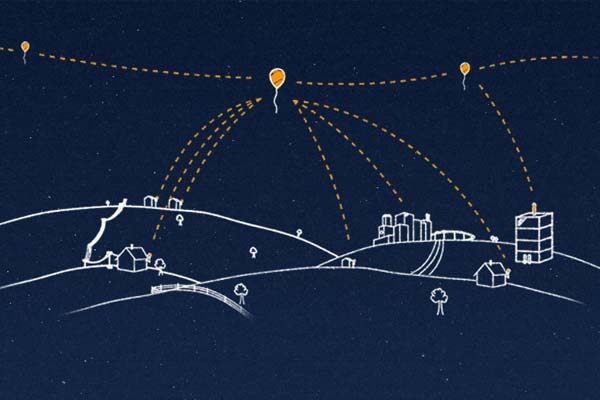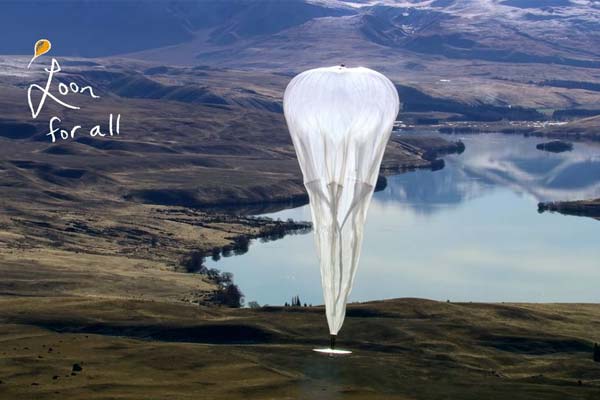Being able to communicate with family and friends to get basic information especially during natural disasters is vital. However, in most cases, communication infrastructure is among the first things to be destroyed by flooding, heavy rain, and strong winds. Huge jelly-like balloons traveling the space are trying to make the problem of communication during natural disasters history.
The Peru Situation
In the last two months, Peru has witnessed the worst ever rains and harsh floods. However, Peruvians have still enjoyed basic internet. This has been made possible by Project Loon, an Alphabet initiative to avail internet to developing countries.
The efforts witnessed in Peru reveal that Project Loon could be a future relief model during natural disasters. Moreover, Project Loon has the potential to increase communication and connectivity when needed the most. Over the last couple of months, hundreds of Peruvians have suffered displacements from their homes by heavy rains. The Peruvian government has even affirmed a state of emergency in over 800 towns across the nation.

Alphabet investigative department for “moon shot technologies” aimed at making the world a better place; X has relied on Project Loon to provide connections to thousands of Peruvians in regions affected by floods including Piura, Chimbote, and Lima. The head of Project Loon, Alastair Westgarth has recently announced through a blog post that Project Loon’s efforts have so far been successful.
In the blog post, Westgarth elaborated just how they are connecting Peruvians using Project Loon. He wrote that Project Loon balloons float approximately 20 km in the stratosphere. This allows them to extend the much-needed connectivity to far and wide locations far below. He added that Project Loon balloons are not affected by whatever is happening below. According to Westgarth, they’ve been flying Project Loon balloons over Latin America for the last couple of months. Additionally, they’ve run connectivity tests in close collaboration with their telecommunications partner in Peru, Telefonica. Westgarth added that when they saw what was happening in Peru, they immediately reached out to the Peruvian government and Telefonica to see how they could help.

Internet of high-speed is transferred to Project Loon balloons via a ground telecommunications partner. The balloons float above weather and two times higher than airplanes. In the Peru floods case, the partner was Telefonica. Once the high-speed internet has been transmitted to these balloons, the transmission is sprinkled back down. This allows people on the ground to access to steadfast internet on their phones.
According to Westgarth, they have sent around 160 GB plus worth of data to individuals over a combined region of approximately 40,000 square kilometers. This is more or less the size of Switzerland. Additionally, this amount of data is enough for people on the ground to send and receive more than 2 million emails or 30 million WhatsApp messages.
More About Project Loon
Over a half of the population in the world still doesn’t have access to the web. Project Loon is a balloons network traveling on space’s edges and designed to provide internet connectivity to remote and rural regions worldwide. Project Loon aims to start and maintain many balloons to provide ground users with enough internet coverage. Since the project began, it has flown more than 19 million kilometers of test flights. Its record-breaking balloons have survived approximately 190 days in the stratosphere.

The current success of Project Loon in Peru shows just how using X’s balloons could change natural disaster aid in future. Other tech companies such as the Aquila drone program are currently testing similar efforts. All these experiments are aimed at connecting the developing world. Earlier in January, Google announced that it had plans to abandon its Titan project, which was working on ways to create internet-connected drones.
In the today’s world, roughly 4.2 billion people or 57 percent of the population still don’t have access to the internet. The most affected people being those living in rural and remote areas. Internet connectivity during natural disasters like in the case of Peru flooding is essential. It helps people communicate with their friends and family and above all reach for medical assistance. Moreover, relief workers greatly benefit from the internet access powered by the balloons. They are able to communicate better with each other. Additionally, they are able to distribute medical assistance more efficiently.
More Technological Scoop: MX-Phoenix Homemade Hexapod Robot that Resembles A Spider
Conclusion
Communication is significantly affected by natural disasters. This happens when communication infrastructure is damaged following heavy rains, high winds, and flooding. The last two months haven’t been the best for Peru. The country has suffered massive floods, but Peruvians have still been enjoying internet connectivity. Project Loon came to the aid of Peruvians when disaster came knocking a few months ago. Project Loon partnered with Telefonica to provide internet connectivity to Peruvians in regions such as Piura, Lima, and Chimbote affected by floods. Loon balloons are designed to float over 20km in the stratosphere. This distance is twice the distance airplanes fly in. While up there, the balloons receive internet connection from a ground telecommunications partner and sprinkle it down to users on the ground.





